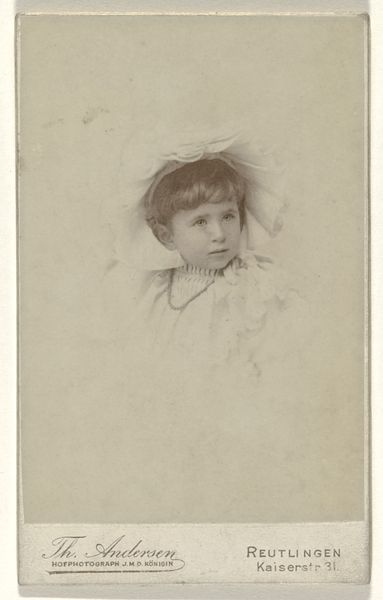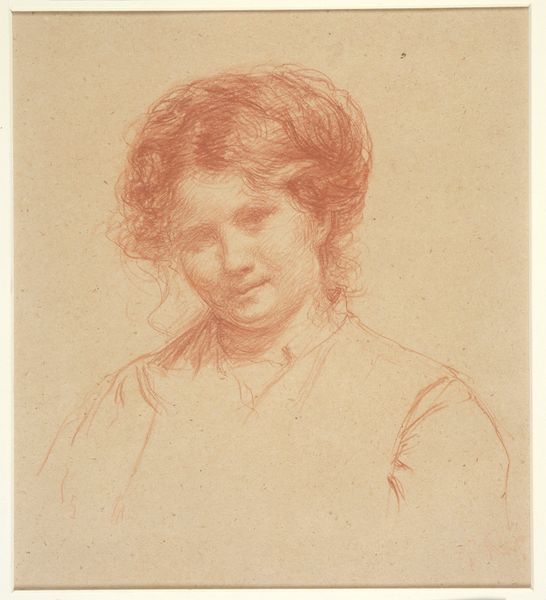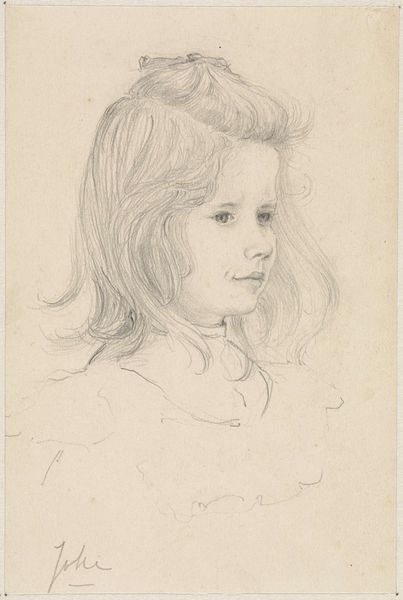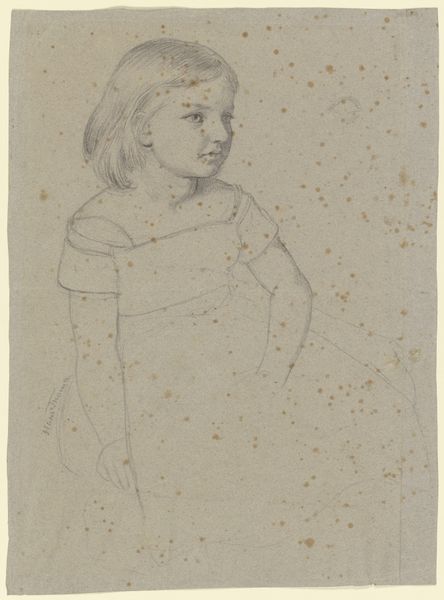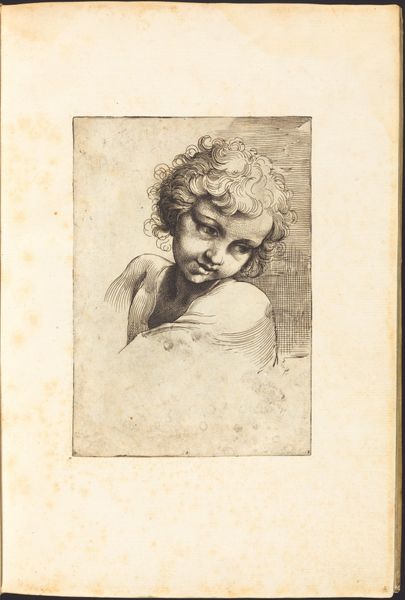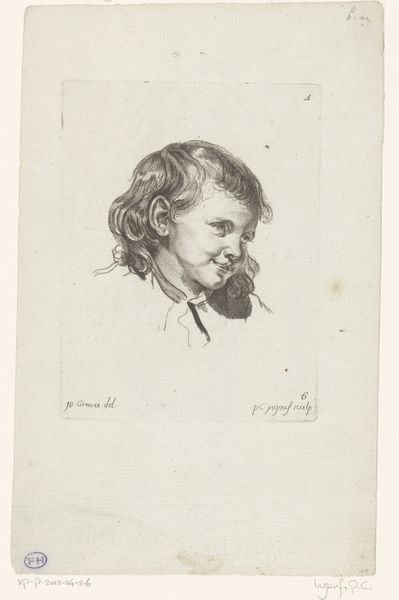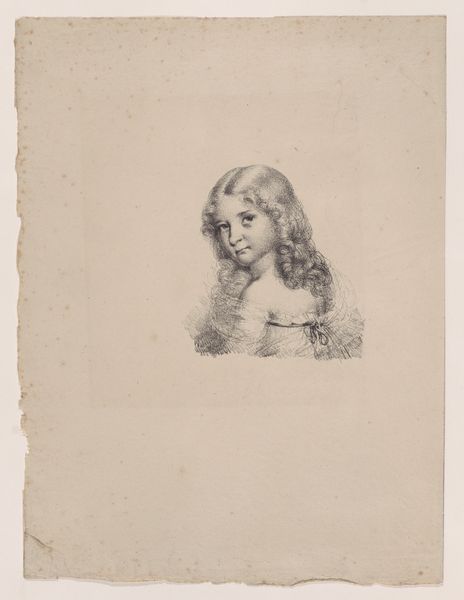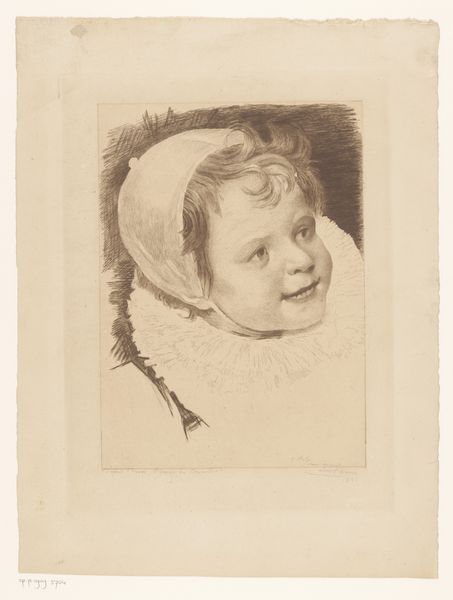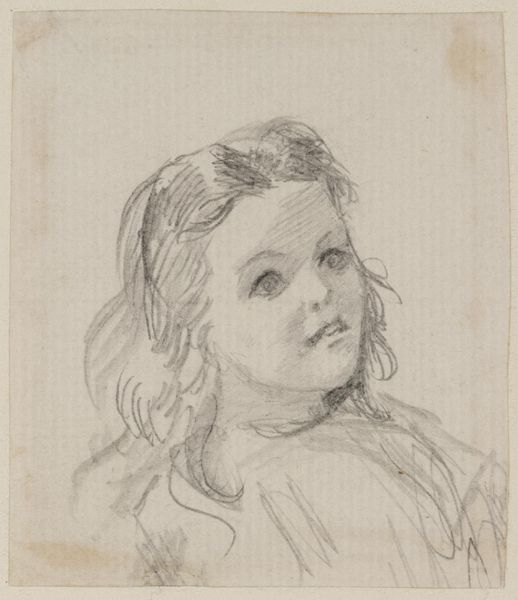
Bust of a Young Girl (recto); Profile of a Young Girl (verso) c. 1886
0:00
0:00
drawing, print, paper, pencil, chalk
#
portrait
#
drawing
# print
#
paper
#
pencil
#
chalk
#
academic-art
Dimensions: 314 × 235 mm
Copyright: Public Domain
Editor: Here we have Paul Adolphe Rajon’s "Bust of a Young Girl (recto); Profile of a Young Girl (verso)," created around 1886, using chalk and pencil on paper. The portrait feels quite tender. What stands out to you in this piece? Curator: The rapid strokes of chalk and pencil, a seemingly spontaneous capturing of fleeting youth, really ground it. This wasn't about idealization, but about the material process – the swift hand trying to grasp a moment. How does this contrast with the traditional notion of portraiture as a symbol of wealth or status? Editor: Well, it feels less formal. The rawness makes it more… human. I can see the artist’s process. Curator: Exactly! And what does it say about the artist's labor? The drawing highlights labor over mere resemblance. Is this a commission, a study, or something more personal, motivated by artistic exploration of medium? The paper, the chalk, the pencil – humble materials elevating the everyday. Does it challenge the boundaries of 'high' art? Editor: I guess so. It makes me wonder who this young girl was, and how access to things like art materials and the sitter’s very time played a part. Curator: Precisely. And let’s consider consumption. Drawings such as this would be considered by art consumers differently than a finished painting in oil paint, and perhaps was much more widely consumed for that reason. What do you think the 'verso' profile adds to our understanding of the recto? Editor: Maybe that even on the back side of so-called high art, there are labor, material, and consumption at work. Thank you for drawing my attention to what can be seen beyond just the face value of an art work. Curator: My pleasure! Recognizing the art-making conditions provides such valuable insights.
Comments
No comments
Be the first to comment and join the conversation on the ultimate creative platform.

